There’s a story to be told of how I came to own an Omega Seamaster Professional 300M…
Jump To:
Specs | History | Case | Dial | Bracelet | Movement | Final Thoughts
One day last March, I walked into the local watch shop where I help out once a week, Arlington Watch Works. I’d finagled my way in about a year before that, offering to help with online sales in exchange for some informal bench training. That day, I was going through the new pickups I’d need to shoot for the webstore and saw an Omega Seamaster Professional 300M Chronometer 2254.50.00.
I fit it over my hand and clasped the bracelet: A perfect fit. This was fate. Destiny. Kismet. I said as much to Dan Sabouni, the shop’s owner and watchmaker. He told me to try it out for a bit and if I liked it, it was mine at cost. After a one-week test drive, the deal was done.
Omega Seamaster Professional Specs:
| Case Dimensions: | 41mm x 47mm x 12mm |
| Lug Width: | 20mm lug width |
| Water Resistance: | 300m |
| Lume: | C3 Super-LumiNova |
| Movement: | Omega Cal. 1120 Movement |
| Misc: | Diver’s extension clasp, COSC-Certified Chronometer, Helium escape valve (for some reason) |
The Seamaster is Omega’s longest running line. Originally released in 1948 to coincide with the brand’s centennial, the Seamaster was based loosely on the waterproof watches Omega produced for the British Royal Navy during World War II. Thanks to a new-to-Omega rubber gasket system, the Seamaster could reach depths of up to 60m. Even then, though, it was solely not directed at waterfaring adventurers and was put forth as a watch suitable for “town, sea, and country.”
Fast forward to 1957, when scuba diving was taking the world by storm and Omega released the Seamaster 300 (and the Speedmaster, which you may have heard of). Ironically only good to a depth of 200m, the Seamaster 300 is the aesthetic forebear of modern Seamaster dive watches.
The ensuing decades saw the Seamaster line expand into a number of models and sub-lines, including soccer timers, quartz dress watches, and the legendary behemoth that was the Ploprof. In 1993, after what can only be described as a 30-year identity crisis, the Omega Seamaster Professional 300M was released. The “SMP” was almost entirely new; while the case featured the classic lyre lugs, the wave dial, handset, scalloped bezel, helium escape valve, and bracelet were all new.
Just two years later, when costume designer Lindy Hemming arrived on the set of the upcoming James Bond film GoldenEye, she told Rolex to buzz off, recognizing that Omega had a history more closely tied to the British Royal Navy, and therefore more in sync with Bond. Pierce Brosnan strapped on the quartz Omega Seamaster 300M 2541.80, and the Seamaster regained its caché. In 2000, Omega introduced my model, the fifth generation of the Seamaster Professional.
And 7 years after that, my specific SMP was assembled and sent out into the world. It’s been in my regular rotation ever since I picked it up almost a year ago—which means I wear it at least once a month, often more. So how has it held up? Am I still as taken with it as I was on day one?
A Classic Stainless Steel Case Shape
The SMP case is classic Omega and the first thing to pop, as ever, are the lyre lugs. Their trademark twist meet a case that is sleek and perfectly sized. With a diameter of 41mm and a height of just 12mm (including the sapphire crystal, and partly attributable to the sloped bezel), it wears splendidly on the wrist; it looks and feels equally at home under the cuff or on the beach (where I hope you don’t wear cuffed shirts). Sharp lines and a brushed finish define a narrow midcase profile, while a barely-there polished chamfer runs along the underside edge.
The 3 o’clock screwdown crown on the Seamaster Professional 300M is protected by guards that flow organically out of the case. The crown itself features an embossed Omega logo and in my opinion could stand to be a bit wider; its length allows for adequate gripping, but there are times when I wish there was more to grab onto (#crowngirth). The screwdown crown (and caseback) provide for 300m for water resistance, but that doesn’t make the Omega-branded helium escape valve at 10 o’clock any less superfluous. Ostensibly, the valve allows saturation divers—who remain at depth for weeks if not longer—to safely decompress as they return to the surface, without the watch exploding.
As of 2015, 10% of US commercial divers were saturation divers, or 336 people. Let’s give Omega a bit of leeway and say that globally there are 1500 people who conduct saturation dives. And let’s now fully acknowledge the inanity of Omega—or any brand—including this function on a modern dive watch. For the lay-wearer, it is just another protuberance to catch your watch on. For my part, I have never touched the HeV on my watch, as I fear that it would destroy the watch or unleash a mythical beast that would desolate the kingdoms of man.
The stainless steel bezel is sloped and features a scalloped edge with a black aluminum insert. While the scalloped edge continues the watery form of the case, it also serves to make the bezel nigh on inoperable except in the driest conditions. I’ve found that even with sweat on my hands, the bezel’s thinness and lack of texture makes setting it a challenge; when water is involved, it’s simply game over. Form won out over function, and the watch may be worse for it. The bezel is aluminum, which was standard until the recent move to ceramic bezels. As such, though, the insert is a bit more prone to the occasional nick and scratch.
The Wave Dial
The wave dial on the Omega Seamaster Professional 2254 has become iconic, and it remains in heavy use by Omega. The entire dial within the markers is embossed with the undulating pattern first introduced on the Bond SMP in 1993. On my Omega 2254, as on the original, it allows the dial to mirror the fluid curves of the case. This serves as a subtle reminder to the wearer to go get in the water and use the watch the way it was meant to be used. One of the treats about the wave dial in black is how it plays with light, with the pattern seeming to disappear if the light misses it, but come alive when it hits.
The dial layout is identical to that of the Seamaster 300 “Big Triangle” from 1960s: a huge triangle at 12 and smaller truncated triangles at every other hour, with the cardinal hours being lopped off to stubbiness. While the stubbiness may look odd, on the old 165.024 it provided the 3-6-9 numerals. Sharp sword hands (also harkening back to the 1960s Seamasters) tell the time, with a red-tipped lollipop seconds hand. Unlike the skeletonized hands of the Bond SMP and all new SMPs, these hands are solid and fully lumed. They are easier to read, day and night, and for that I say they are better.
Looking at the rest of the dial, the Omega logo and name are printed (not applied, as in some new models) just below 12 o’clock. There’s a bevy of text in the southern hemisphere, including the Seamaster branding in the classic script that has remained in use since the line was first released over 70 years ago. Justifying the stubby index at 3 o’clock is a beveled date window with a color matched date wheel. This is how date windows should be done; it is minimally disruptive both in physical and visual execution. We finally have a modern justification for the stubby indices at 3-6-9: symmetry!
The keys to lume excellence are charging speed, brightness, evenness, and duration; the Omega Seammaster Professional 2254 excels at all four. A quick step outside on a sunny day (literally seconds) will leave the watch’s C3 Super-LumiNova ablaze for several minutes. Because of how the lume is applied on the dial as a droplet confined by the thin white border, when it begins to dim it does so unevenly; it continues to shine in the middle of the plots after the edges have gone dark.
Stock Bracelet and Strap Pairings
The Seamaster 2254.50 comes on a 3-link bracelet featuring satin and polished finishes. The same watch was also available on the 5-link Omega bracelet more native to the Seamaster line, though I’ve always found that one a bit busy. The 3-link bracelet articulates well for excellent comfort and closure is granted by a folding push-button clasp. The only issue when I got this watch was the clasp spring was totally shot, ensuring it popped open with the slightest nudge. Having since replaced it, I can tell you that it is both easy to do and allows fine tuning of the closure’s tension.
While the bracelet does not feature any microadjustments, it does have a diver’s extension hidden under the clasp, providing an extra 3.1cm to those who wear wetsuits to work. Because of the lyre lugs, the bracelet will never sit flush, and as such there is a disruption to the fluidity of the case when it is attached. I always prefer a bracelet be integrated as seamlessly as possible—i.e. Lorier Hydra, CW C65, ect.—but recognize that it is not always possible.
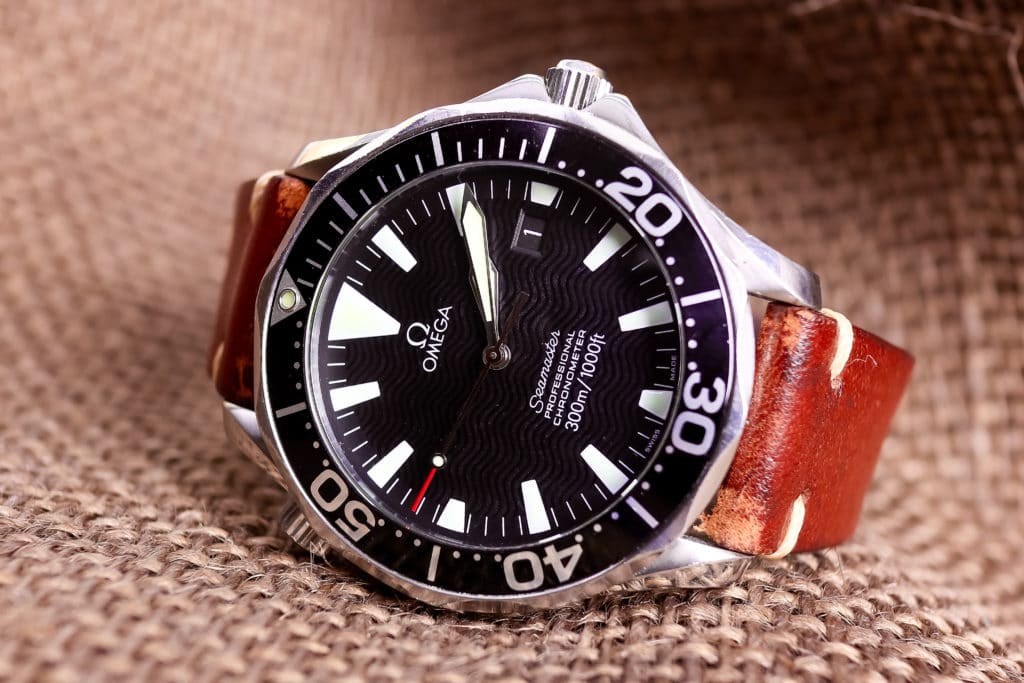
One of the great things about this watch—and steel black and white watches in general—is that strap combinations are endless. I’ve put this on all the colors, all the materials, and all the styles and it always works. With its dress-leaning styling, it is equally suited to a sleek suede strap as it is to a silicone band. As is hopefully clear from the photos in this review, the Seamaster’s ability to work well with so many straps is a testament to the design versatility of the watch itself.
Omega Caliber 1120
Flipping the watch over, a screwdown caseback reiterates the wave motif and has the classic Omega Seamaster hippocampus, whom I’ve named Gert. Considered sea monsters by the ancient Greeks, the hippocampi, with head of horse and body of fish, are often affixed to the gondolas of Venice as waterfaring protection.
Omega’s in-house engraver had taken a trip to the floating city and was inspired thusly, resulting in the seahorse emblem gracing Seamasters since 1958. Unlike smaller brands that feel a need to flaunt all their specs on the caseback, Omega has no need. So caseback text is kept to a minimum with the Seamaster name and the Omega logo.
The caseback protects the Omega Caliber 1120. While the co-axial movement that now drives almost every Omega was acquired by the brand in 1993, it wasn’t fully integrated into a movement until 1999, with the Caliber 2500. Introduced in 1996, the 1120 served as the base for the 2500. The 1120 is based on the ETA 2892-A2, one of the finest movements ever made by Omega’s sister brand. The movement is a COSC-certified chronometer, with an upgraded 23 jewels, additional rhodium plating, 44 hours of power, and beating at 28,800vph. Please don’t hate me, but my Seamaster—which I got at cost with no knowledge of service history from the watch shop where I get to play with watches—is running within COSC specs at +4.2s/d over three days. So that’s a nice surprise.
Final Thoughts
This one is staying with me. It’s a symbol of my relationship with Dan and the watch shop, and it’s a solid watch that fits into the go anywhere, do anything schema. It’s apparent at a glance that the Seamaster Professional 300M is a bit different from your usually higher end dive watches.
When put side-by-side with a Submariner, it’s sleeker, dressier, more versatile. As such, I think that it’s better considered a dress diver, if you can accept that such a thing exists. With its decidedly elegant case and its slippery-when-wet bezel, this watch is for people who never dive. It’s for those who are more likely to time a soufflé than a dive, more likely to get it wet with a hose than in the ocean, more likely to be bored at work than bored on a boat. In short, this watch is for people like me.

Mike became obsessed with watches in 2015 after spending an inordinate amount of time finding the perfect wedding watch (the Frederique Constant Slimline Automatic). He prefers a well-executed date window or none at all, and strives for a diverse collection with limited overlap. When not fretting over which watch to wear with which strap, he works as an emergency mental health clinician in Northern Virginia, where he lives with his wife and son.
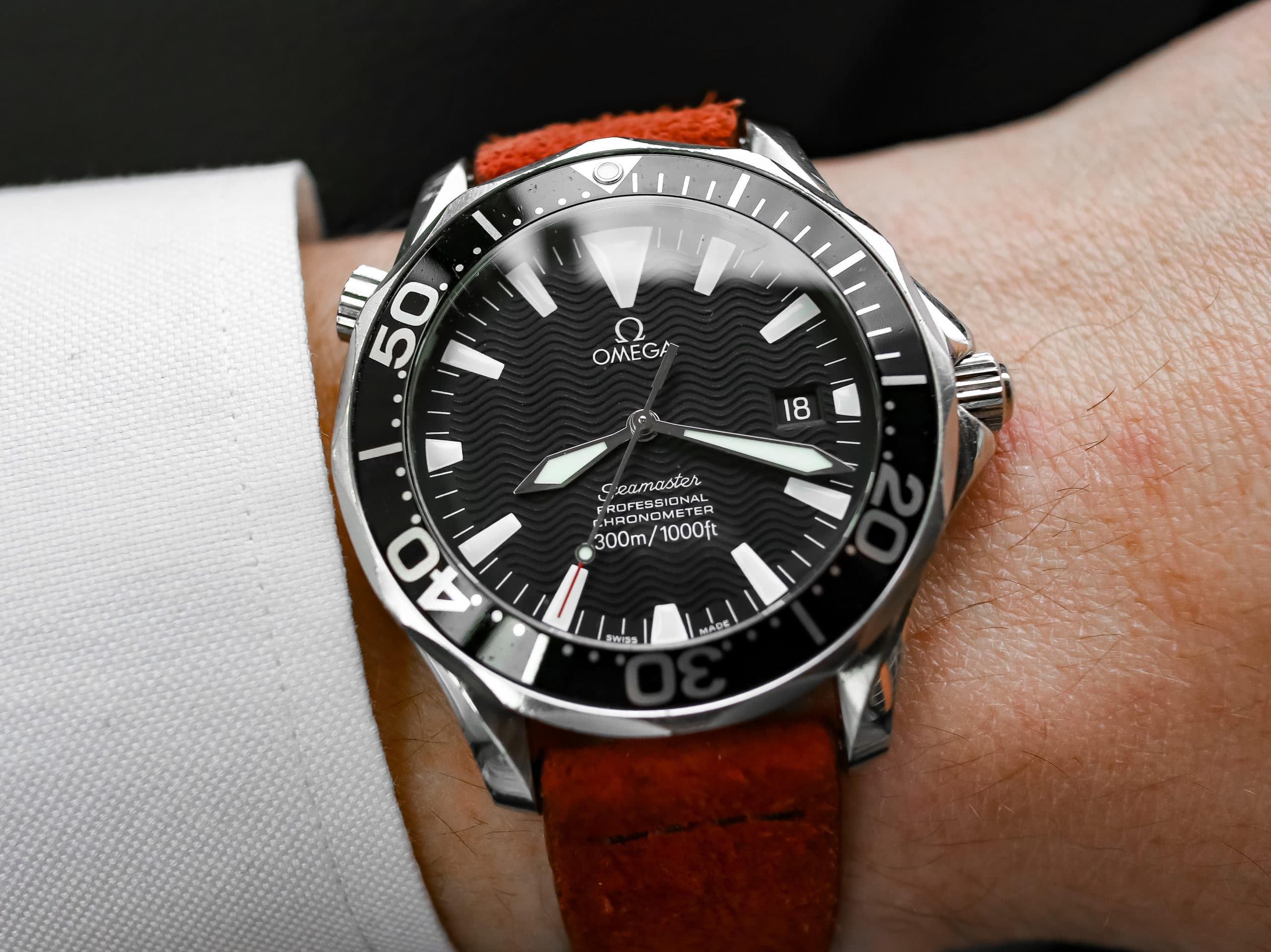
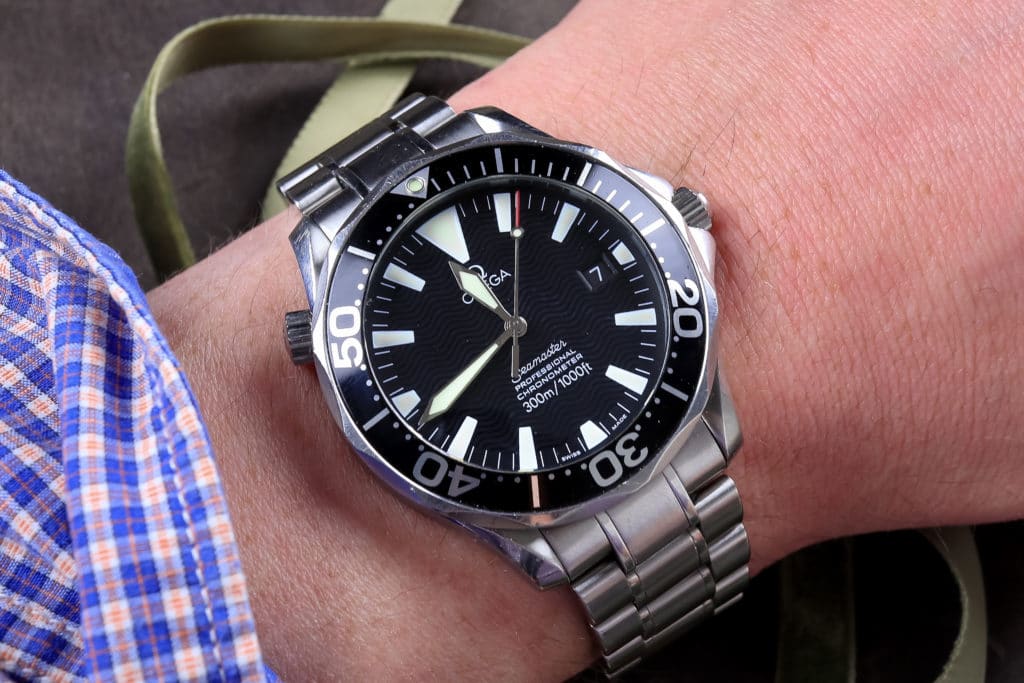
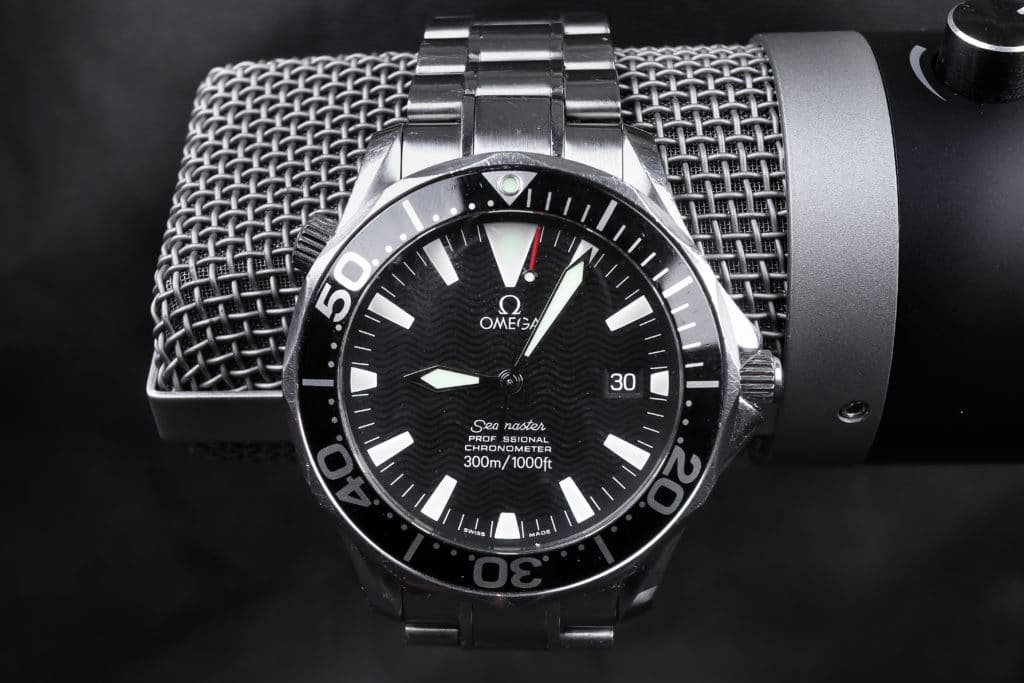
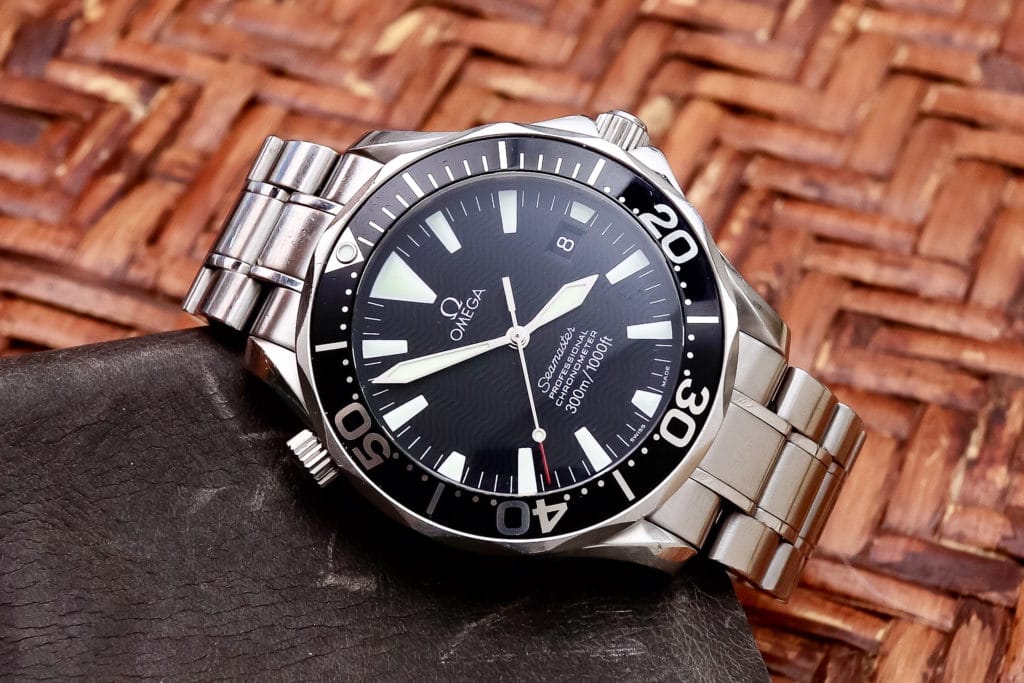
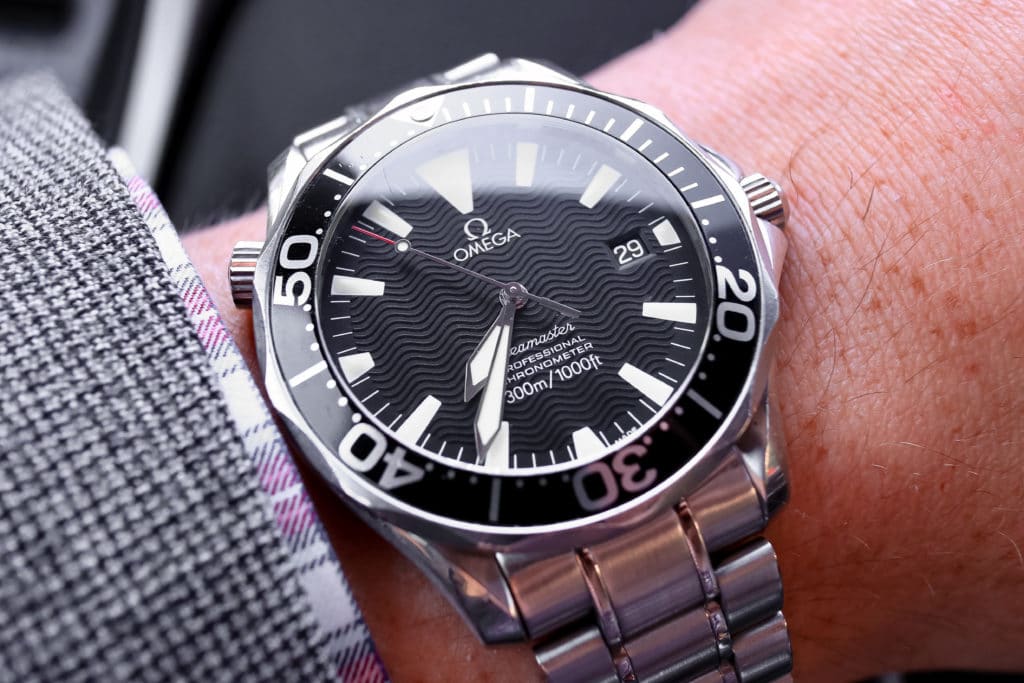
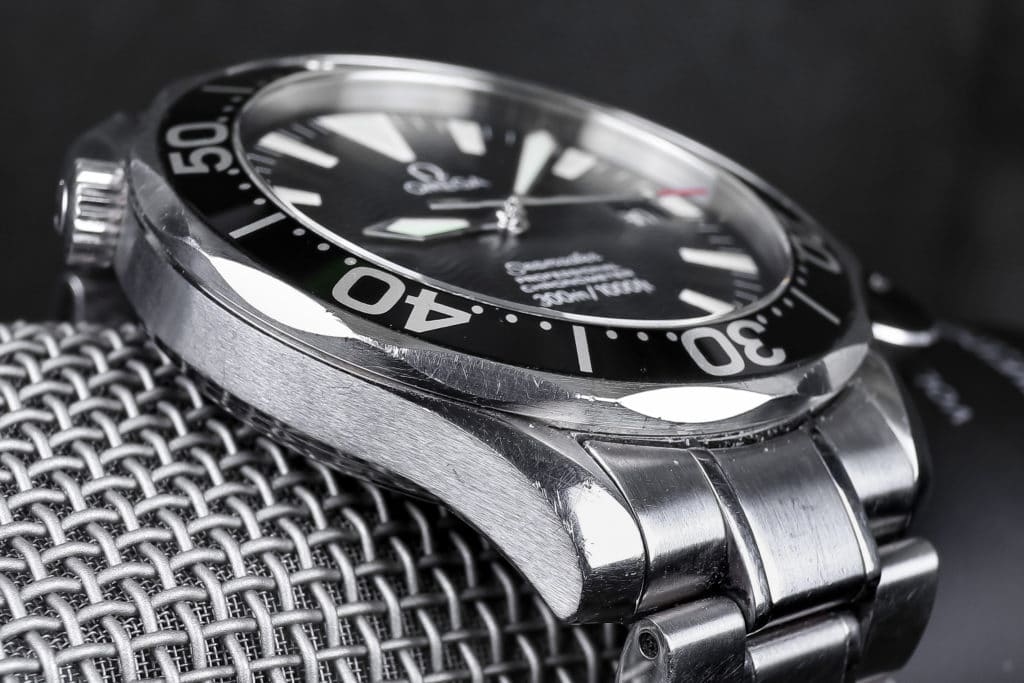
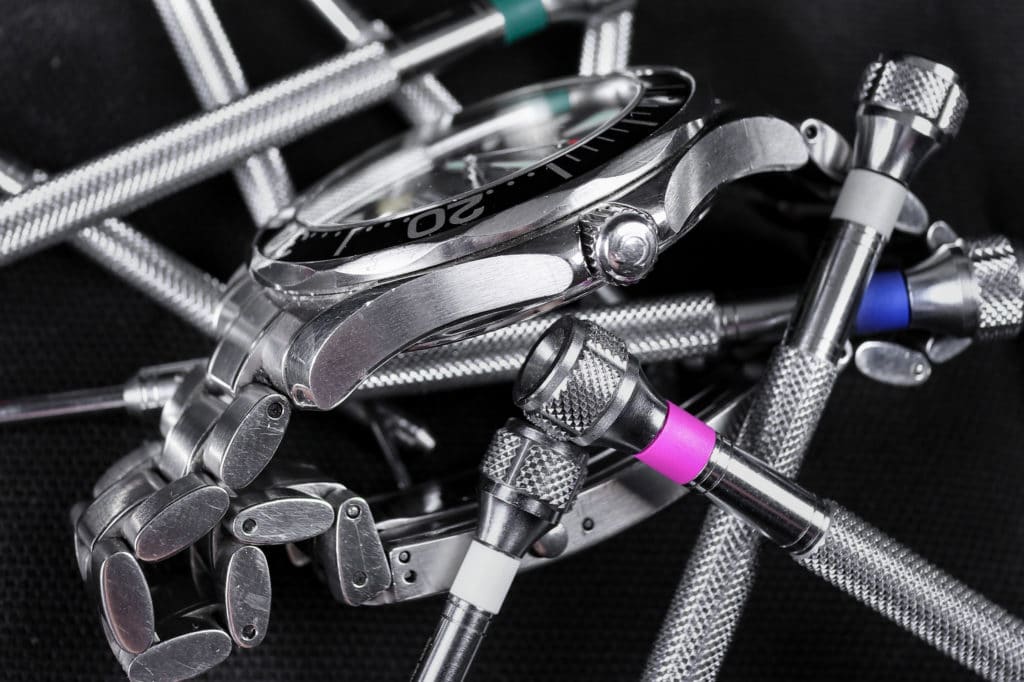
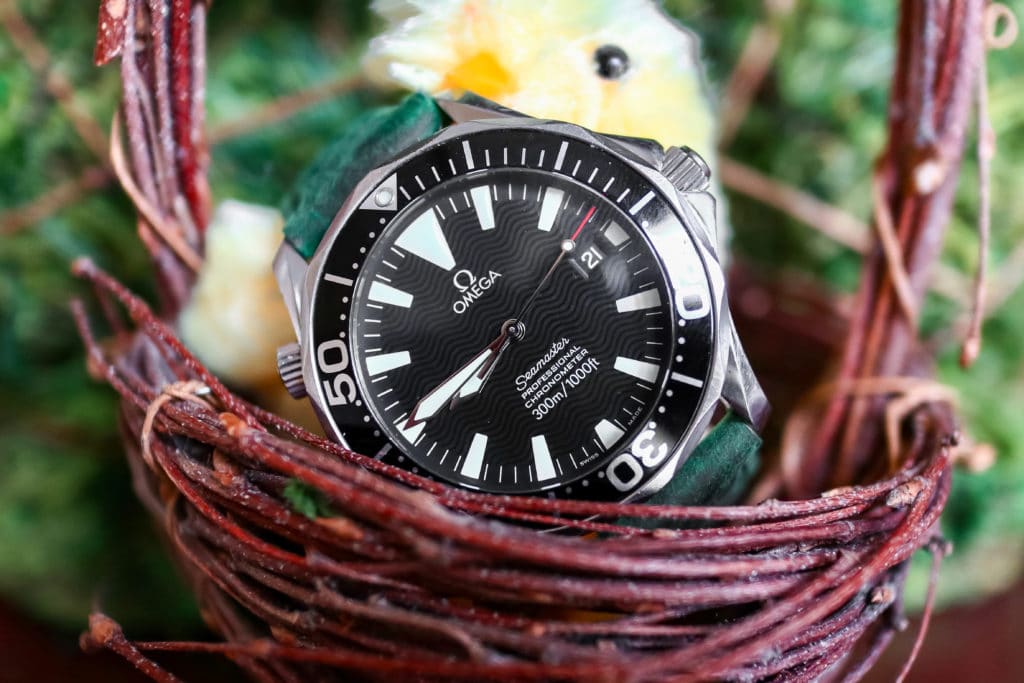
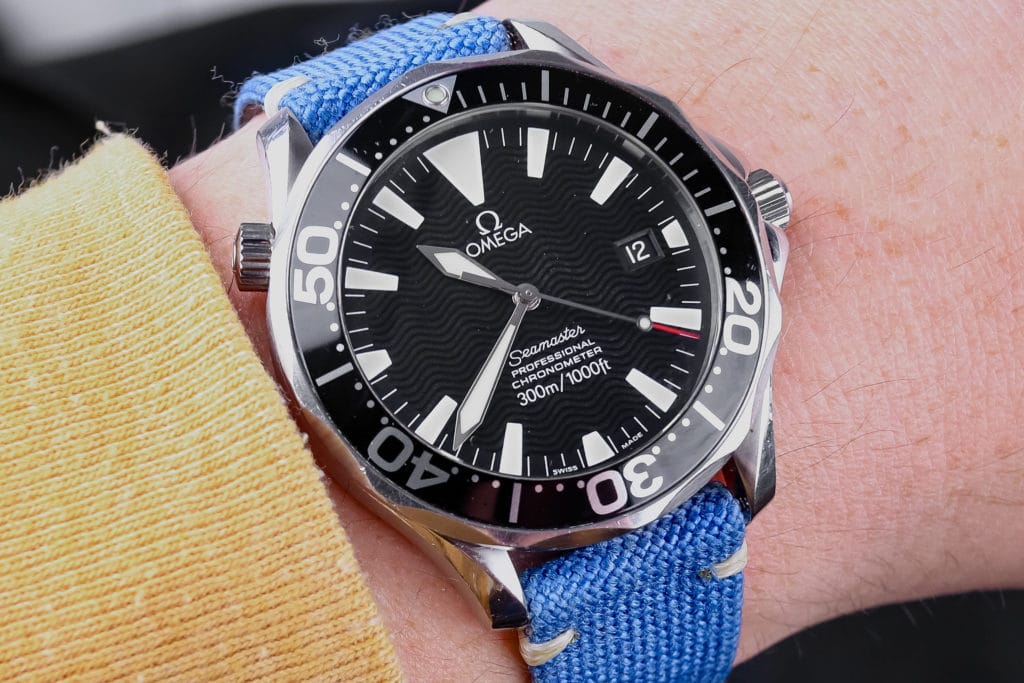
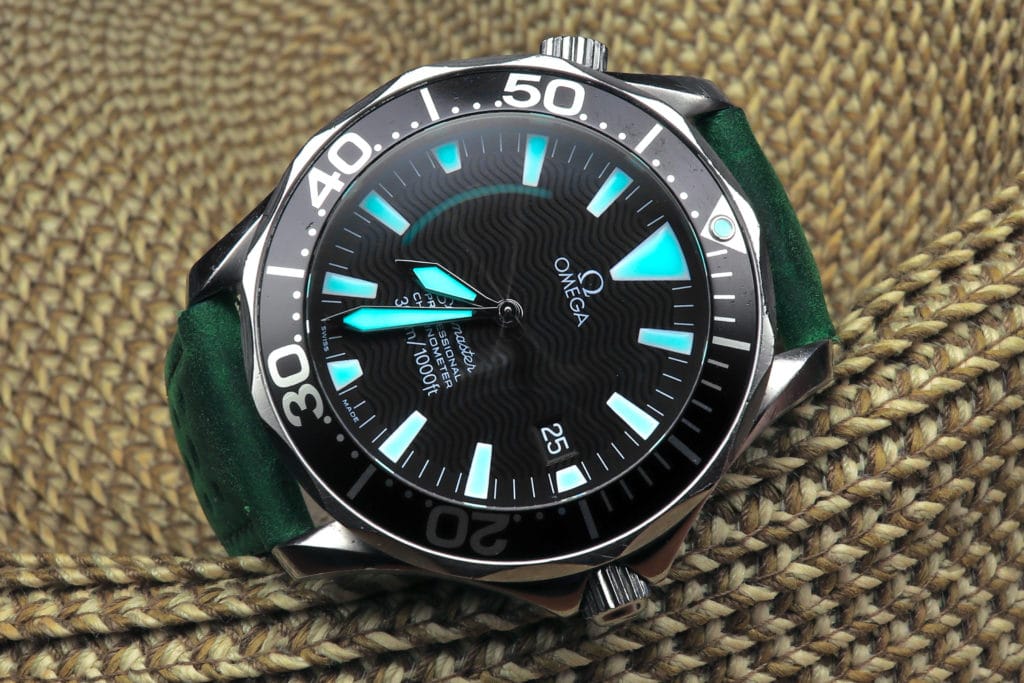
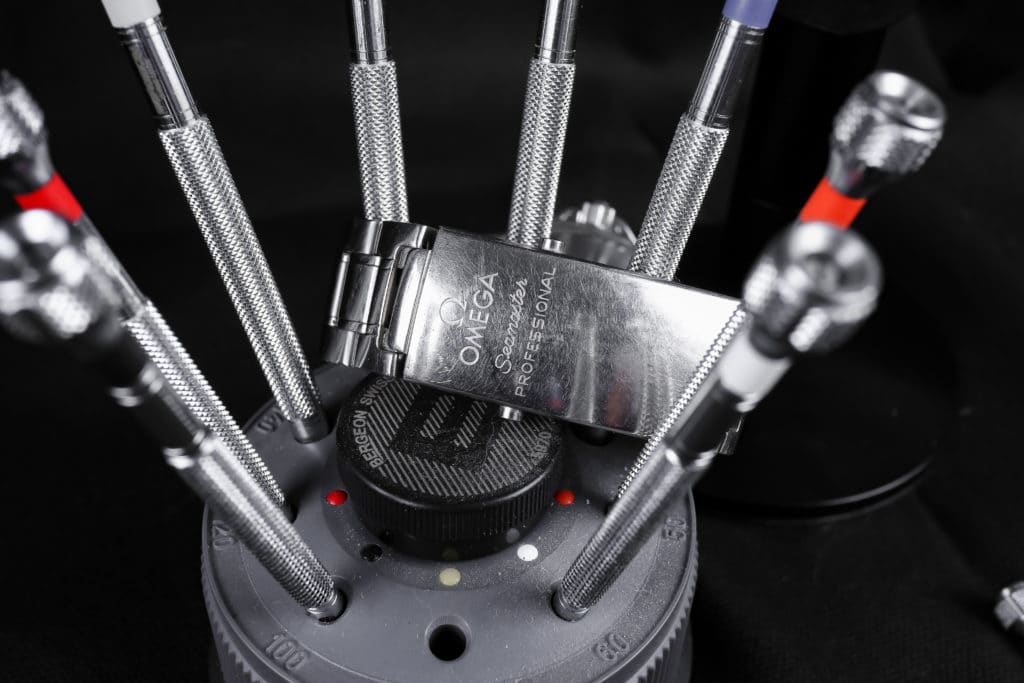
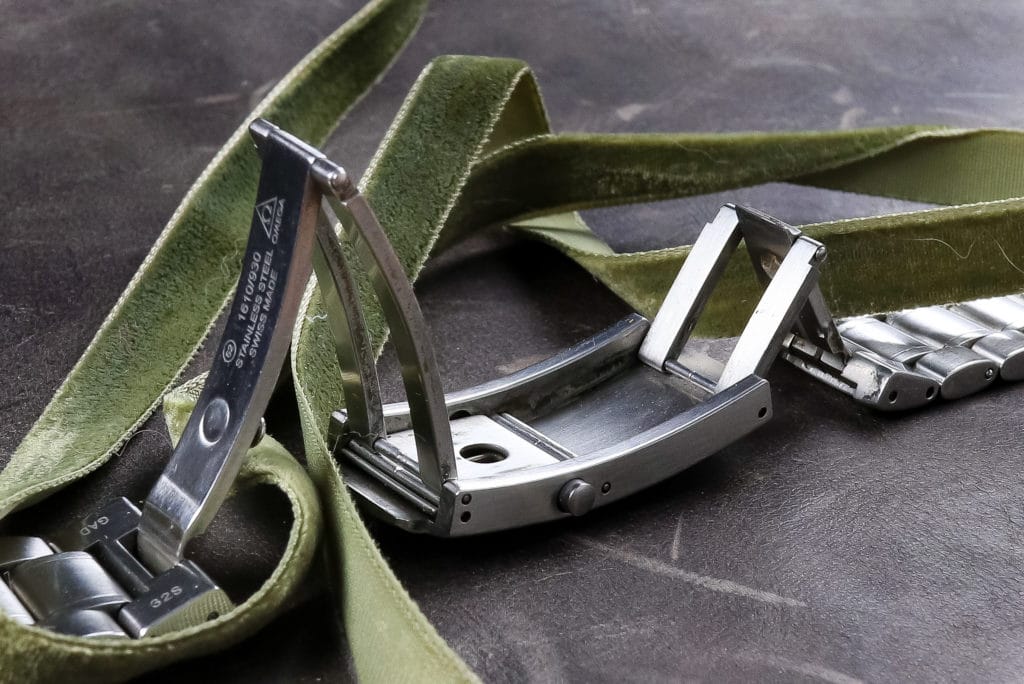
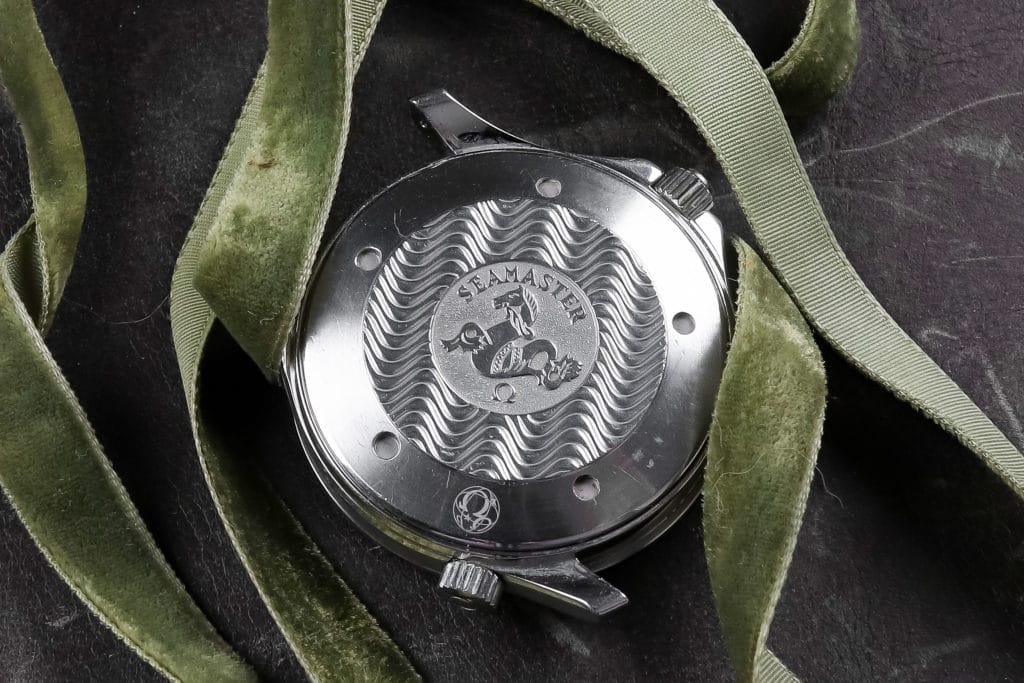
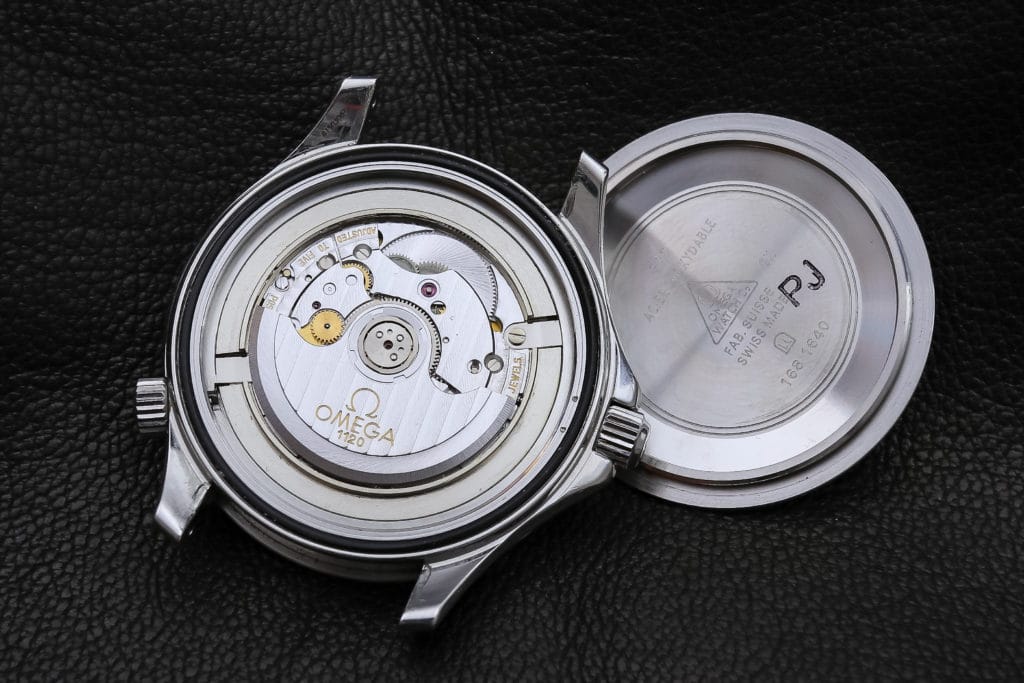
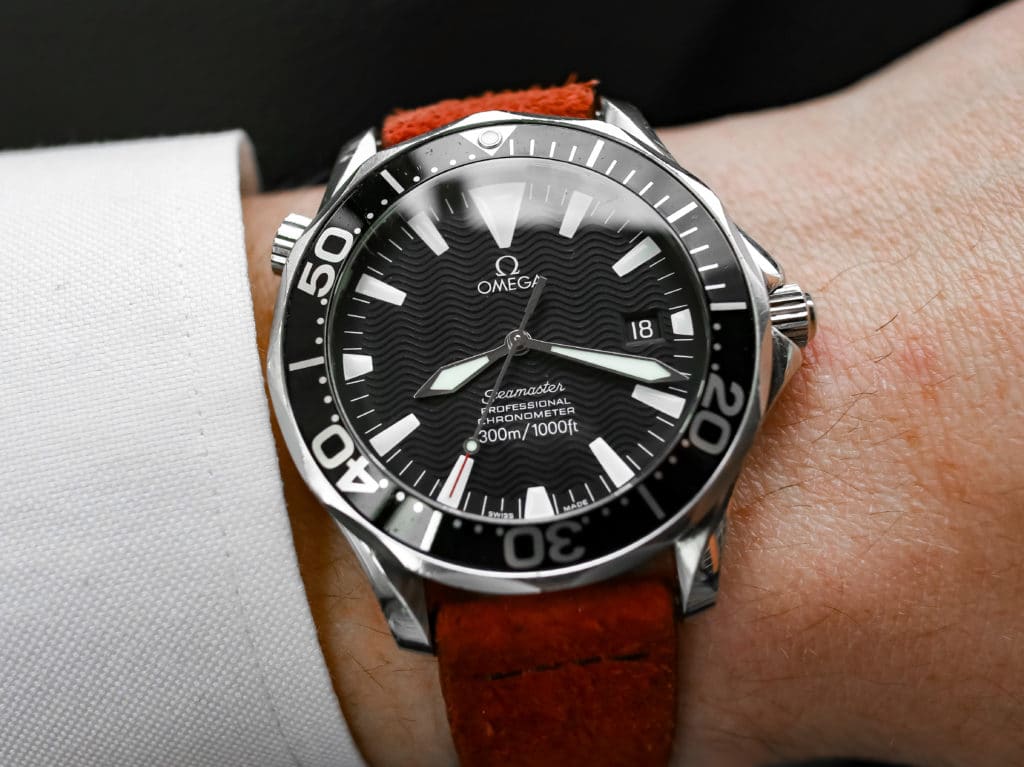
Nice review, I really enjoyed it. I especially like that you wrote about the negatives, this is quite rare on watch blogs. Keep up the good work!
Great write up. I’ve had one of these since new. 2003. Could never part with it. It’s an old friend. I’m always interested in others thoughts on the 2254. I think it stands up as well as it did back in the day. Decent looked after ones are becoming harder to find and I rarely see one on someone else. A bit of a classic I’d say…
Nice pics. Glad you enjoy your 2254. I’ve had mine for several years. Tough, reliable, COSC precision and good looking – all I want, more than I need. It’s my only ‘nice’ watch and my daily wearer. The lack of ‘grip’ on the bezel was my only initial complaint. I have found a little moisture (eg, exhaling on your fingers and/or the bezel) will paradoxically increase grip. I also found it easier to turn after being fully submerged for a bit. But it shouldn’t be too hard to turn, perhaps the bezel mechanism needs a cleaning. After sending mine in for a full service (it’s first in 13 years) at Omega, the bezel came back much easier to turn, the watch looks like new and, best of all, was running 2.4s/d. I fell in love again and quit looking at other watches! Thanks again for sharing.
Thanks for sharing your story, DW! Always love hearing how others experience the watches I have. You’re probably right on the bezel–as mentioned I got this with unknown service history, and like yours, it’s probably been a while. Perhaps it’s time for me to send it in!
Cheers, Mike
I have had mine since 2003, my son bought it for me and from day one I have loved it, I love it when people remark that I’m wearing an Omega sea master. Makes my day.
Just waiting for Omga to open up so I can get the battery replaced.
David
Hi there. Just a quick note – the 2254 with the Bond bracelet isn’t a 2254, the ref. no. is 2054. By the way – what Omega was issued to Royal Navy during WWII? Its’s news to me.
Thanks for the reply, Conelpueblo. While I was aware the reference was different, I didn’t make note in the article–we’ve changed it to be more accurate.
As far as Omega and its relationship with the British Armed Forces (and Navy) during WWII, please see the following links:
https://www.omegawatches.com/en-us/chronicle/1940-military-precision
https://en.wikipedia.org/wiki/Omega_Seamaster (first paragraph of the history section, with citation)
https://corrvintagewatches.com/product/omega-1943-hs8-british-military-ww2-navy-pilots-watch-mint/
https://www.loveantiques.com/vintage-watches/mens-watches/swiss/omega-hs8-wwii-fleet-air-arm-pilots-watch-177658
Cheers,
Mike
Enjoyed the reviews along with the photos! A great write-up. So I currently own the 2254.50, purchased after the birth of my first child. So, the watch sits very well on your wrist, and was wondering what your wrist size is?
Thanks
I acquired a very nice example in September 2020.
Probably paid over the odds but I love it.
It’s very comfortable, feels top quality without being flash
It’s 18 years old and I will only ever sell it if I am desperate for finances.
Over 100k Omegas were issued to Allied forces during the war.
Hi, love the review – however, I have a question. I’ve inherited a ref 2531.80.00 (the blue skeleton hands version). I also find the 5 piece strap quite ‘busy’ I wanted to get the 3 piece as your watch has. You mentioned you replaced yours – can you tell me how, any ref numbers and an idea of cost? Sorry to ask but I’d love to get some advice from someone who’s replaced this strap recently. Thanks, mike
Great posting. I have The Seamaster 2254.50 GMT 50th Anniversary with 3 link bracelet. I’ve actually wondered why I didnt have the Bond bracelet. All much more clear.
I’ve been a little disappointed in time accuracy, as it runs about 2 mins fast.Ive had it 6 months and love its classic look.
Nice review, Mike. Was wondering if you have the brand of the blue strap featured under the Wave Dial section. Looks great.
Thanks!
Would love to know this also!
Great review Mike. You even got a few laughs out of me! And you nailed it for the watches intended market. I think for most companies the “dive” part of the watch is basically a tecnical exercise to give the watch credibility. Most dive watches never even see water. I really like the Oris diver 65. Definitly a very cool piece. Do you have any experience with this watch? Thanks again for your piece. Have a great day.
A great article Mike. I owned an SMP 2254.50 for a while, but sold it in a move that ultimately started a “revolving door” of different watches the past 12 months. While I had the chance to explore more brands, styles, and sizes than I might otherwise have tried, I wound up really, really missing my 2254.50 and having an Omega in the collection. I was on the edge about re-acquiring one…and then came across this piece, which helped put me over the edge. Happy to report that it’s back on my wrist as I type this thanks to the team over at Watch Vault NYC.
Also, small world – I also live in Northern VA and frequent Arlington Watch Works. Dan is servicing a piece of mine right now. Maybe we’ll cross paths someday!
Cheers
I much prefer the sword hands and overall design as compared to the more modern skeleton hands.
Have not had one of these in my hand so not sure if fit and finish is similar to more modern iterations.
I love my Seamaster Professional. This watch will be with me forever. Is in perfect conditions since I treat my Omega like one of my own body part. It was a gift from my wife , she bought it for me on one of our many trips to the Bahamas on a Store name Little Switzerland she also bought me that day my two beautiful Movados.
God bless
I’m a bit late to this thread but I have to weigh in.
My 2254 was the first watch I purchased new and it’s going to stay with me for as long as I’m around. It’s the perfect blend of legacy design and upgraded features. The painted indices, lyre lugs and especially the sword hands capture the best of the 300s from the 1960s. The layout of date function indeed helps maintain dial symmetry.
Also, its modest case height combined with the slightly domed bezel and crystal make my 2254 wear wonderfully sleek on my wrist. With other diver’s watches, I suspect the heavy bracelets help balance the heft and height of their cases while on the wrist. I wear mine with a black Zulu strap which I swap out every few years. It’s a great fit, feel and look—which is also great for traveling anywhere because it’s really under the radar.
And while Omega’s coaxial movements are beautiful, having the ETA inside tends to make the watch much easier, quicker and less expensive to service. Plus, it’s absolutely a great movement that stands on its own for accuracy and durability.
Yeah, it’s a keeper.
Yeah, my 2254 is a total keeper.
I have this watch. Photos don’t do it justice.
Hello – my watch was a gift from my wife on a birthday. She bought it in Boston used, and it was in impeccable condition. I had a famous watch Jeweler (Moritz) work who did work for Shreve Crump and Lowe for many many years. He was the only one I let work on it and he came highly recommended. How do I confirm the exact model and movement? It is the one with the solid triangle and solid sword hands. Very cool watch it love it. Have worn it daily for 10+ years since it was given to me. Thanks!
Sorry I meant to add that it is an Omega Seamaster Professional Chronometer 300m steel black face.
I have the battery version. Purchased in Geneva Airport Duty Free. Best thing I have ever bought. Will pass on to my lad.
My first Omega Seamaster is 61 years old and needs some repairs. The one I am wearing now is 30 years old and works very well .
Thanks for sharing a wonderful review.
I also have one, given to me by my dad on my 18th birthday (I know I’m a lucky guy). It was his first watch and since then I have accumulated some great pieces (speedmaster pro, Tudor BB GMT, Panerai 914 and recently a Rolex sub 14060m – again I know I’m a lucky man). This watch is and always will be my favourite of any collection, it’s usability, versatility and beauty is not matched by (IMO) any other watch. The other great thing is I feel I can actually wear this wherever I go without attracting the unwanted attention my sub brings.
Glad to be a part of the 2254.50 team
Gianni
My watch journey brought me to the titanium version of the 2254.50 – the 2231.50. I love the look of the 2254.50, but I love more the lightness of the titanium version. Thats my keeper – the 2231.50.
Great article, thanks!
Thanks Mike.
Great review! Love the look of the Peter Blake!
Enjoyed the review and agree with the observations. I also have one, since new in 2004. I have far too many watches but this (and a Moonwatch) would be the last to go if I was to start reducing the numbers.